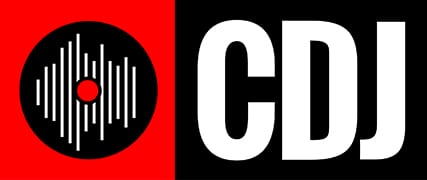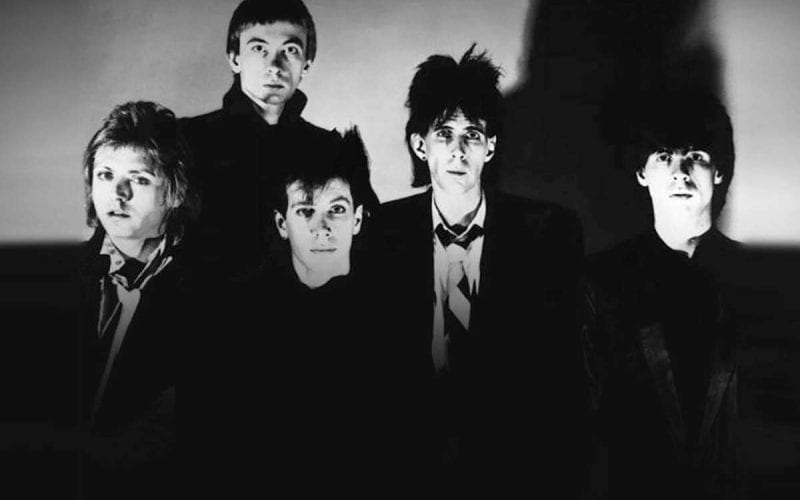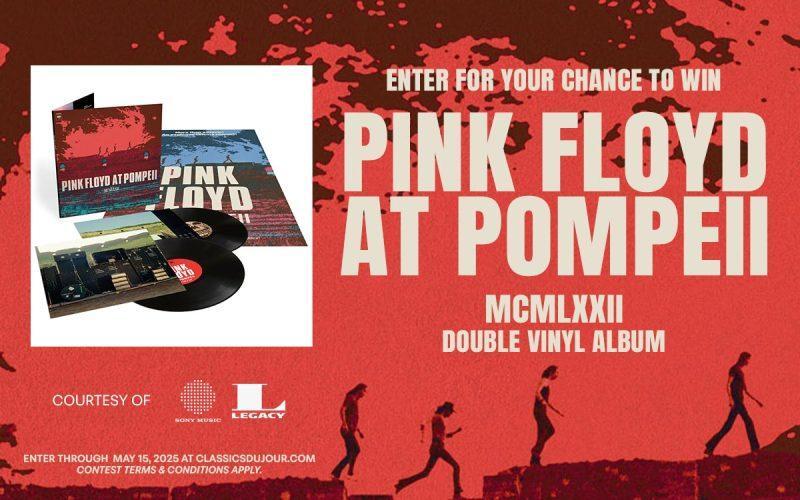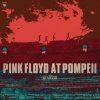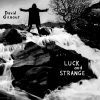
“Before the Stray Cats came, and we had known Brian our whole lives and we were still young, but by the time the Stray Cats played, Lee and I had already played as a rhythm section for hundreds of hours together. We would get together, and he would go boom and I would go bop in the garage all day long.”
The Stray Cats – Brian Setzer, Slim Jim Phantom and Lee Rocker – are back and ready to once again rant n’ rave, strut and swing and rock a town near you. The rockabilly revivalists are known worldwide for a string of hits that include “Rock This Town,” “(She’s) Sexy + 17,” “Stray Cat Strut,” “Built for Speed,” “Runaway Boys,” “Too Hip, Gotta Go” and “Something’s Wrong with My Radio,” just to name a few.
The trio is celebrating its 40th anniversary with the release of a new album, the aptly-titled 40, and a U.S. tour. I recently spoke with drummer Slim Jim Phantom about the reunion, the record and the road trip.
If it’s true that cats have nine lives, what life are the Stray Cats on now?
(Laughs) Ahh, let me think. Well, it’s the same one in a funny way (laughs). One long one!
You guys are celebrating your 40th anniversary with a new album and tour, both of which of course we’ll talk about in a minute here, but first tell me who initiated the conversation about getting back together to record and hit the road.
How it came about was that there was a festival that was steaming toward us. When we first started playing in the band, and everything that happened since, what we were looking for from day one was really like a few more people who kinda new what we were doing. We wanted a few more to be exposed to the original American rock and rollers and kind of know it and love it as much as we did. That was pretty much the goal. Make a few bucks at it, not live at your parent’s house, right? Outside of that, the goal was like really just spread the word kinda thing. So, fast-forward, last year [we did] this rockabilly festival in Las Vegas. So, that one show was pretty much the inspiration for it. We hadn’t really seen each other in a while, but we went and there were 20,000 rockabillies from all over the world. So, that was very inspiring. Everyone dug it, got along very well. And that kinda just resulted in a month or so Brian calling and having some songs. Before we knew if he had written an album’s worth of songs, and we’d come up with parts for it and it all happened very quickly from there. We went in (the studio). Once it got going – maybe it just took a few years to get it going – but when it got going it happened very quickly.
Let’s jump into the album. Of course, it’s the first new album in well over 25 years. It’s aptly titled 40, due out May 24th. It opens with the – I think – mile-a-minute “Cat Fight (Over a Dog Like Me).” I love the line “the fir was flyin’, I ain’t lyin’.”
(Laughs)
Tell me a little bit about this one.
Well, I think that was maybe the first one that we worked on. It sounds like that was a born-to-be opening number kinda track. It was one of the ones that came together very quickly from the demo. It’s really in the spirit of one of those classic rockabilly songs but like in Stray Cats fashion it’s kinda amped up a little bit.
You have mentioned that you’d done a few shows before going into the studio after so long. Was recording again like riding the proverbial bike?
Yeah, the recording was pretty easy comparatively. What we did, which turned out to be the very different thing is we set up exactly like it was a live gig. Very close together. All in a row. Exactly like at the gig. Closer together and we did most of it live. Trying to emulate our favorite records, like a Gene Vincent album, really. Specifically, the second Gene Vincent album. And it was as retro as it sounds (but) it was kind of a new way of doing it. Once we were in there it went very quickly, and unlike the old days, we had a very workman-like approach to it. Everyone got to have lunch (laughs) and work until eight o’clock at night. It wasn’t doing it all at night and showing up at various times. It was all very organized, which at this point in life felt very natural.
Let me ask you about “Rock It Off.” To me that’s a standout track, and not just because I’m married to a nurse (laughs)…
(Laughs).
People will know through the lyrics of the song (why the nurse reference). And I’ve always believed music is medicine, so tell me a little bit about how this one got done.
That was once of the later ones that I think Brian had written. It was still before we left (the studio). To me it may be my favorite one. It’s a classic blues, kinda rockabilly riff, but different at the same time, which I think is really what he managed to capture on these songs. The hardest thing to do is reinvent the wheel, right? These are rockabilly teemed rock and roll songs, but they’re all different. And this is one of those riffs that like, you think you’ve heard it before, but you really haven’t. I can’t wait to get this one live.
For non-musicians like myself, can you explain the main difference between playing in a trio versus the traditional kind of four-piece rock and roll band?
Yeah, sure. I mean, as a drummer you have to leave a little bit of room. Whereas a lot of times if you’re doing it with a four-piece band you can get away with playing a couple more licks if the guitar player stops playing rhythm and goes to the lead there’s a big hole in the sound all of a sudden. So, as a drummer in a trio the challenge is to really make that as unnoticeable as possible.
Got it. I was gonna say, I guess in your case specifically another difference is you play standing up.
Yeah, that’s when it comes into the physical part of it. At this point standing up is just becoming more physical. That was the challenge. That is, still a little, but it brings a certain thing to the group that makes it completely different. We can’t just go back to like, okay, we’re old now, we’re gonna sit down and play (laughs). When we signed up for this awhile ago it was one of the things that made it recognizable. And to do it live it’s just a little more stamina. And we brought the drums to the front of the stage, which was the one truly different thing. Because everyone before – even the greatest drummers ever – were in the back. So, I think you have to keep doing that (laughs). You know, do a few extra pushups, or a little bit of extra hiking now at this point. It’s an important thing.
Let me ask you about one more song on the album and then we’ll kinda roll into the tour a bit before our time runs out here. “Three Times a Charm” is one that I think would easily fit in the Bill Haley and the Comets canon. Would you agree with that?
Yeah! Brian wrote that one maybe in the early days of being in the studio and it was very nice of him – he wrote that one for me kind of because it’s got the drum hook which really harkens back to one of those first two Gene Vincent albums, which should be the template for all modern rockabilly, and certainly is for us. And it was really one of those, you know, like an homage to that, but again making it different. Not just taking an old Gene Vincent song. The chords and the phrasing and where the stops fall is a little bit different. A little bit trickier than the average, umm, smarter than your average bear a little bit (laughs). So that one was kinda based around that drum hook hitting with the words.
Let me ask you a fun, kinda, well not kind of, definitely hypothetical question here. So, if Bill Haley, Eddie Cochran, Carl Perkins and Gene Vincent were playing in the same night, same city, which show would you be at?
Hmm! I’d definitely take a taxi around to the different ones because parking would be…(laughs). Can I say that they would all want me to sit in and maybe they would come to the Stray Cats show (laughs).
Oh yeah, sure!
I wouldn’t want to make that choice cuss they’re all the greatest ones. I did see Carl Perkins a few times and sat in with him. I never saw Gene Vincent. I would have loved to have seen him up close. Bill Haley – he was around. He passed away I think in ’81. I don’t know if I ever saw him. But I would have loved to have seen Geno, for sure.
Well let me ask you this other question I often do in these conversations. It’s kind of the, what I call proverbial – and sometimes they’ve been literal – Beatles on Ed Sullivan moment. We’re talking about all these great artists that you admire. Did you have one of those moments, you know, when a record came on or a concert you went to…
Most definitely, yeah.
…where you said to yourself, I have to do this?
Yeah. Positively. That would have been when I was exposed to what the essence of Elvis Presley was. This would have been in the late ‘70s, I was in high school, maybe the last year, and we’d take drum lessons. I wanted to be a musician at some level. I played in bands and I knew who Elvis Presley was. Obviously, he was a rock star. I really didn’t have that much of an opinion on him. I knew who he was. He was great. But when I was exposed to the earliest days of Elvis Presley at Sun Studios, which I was unaware of. I hadn’t studied it. I hadn’t really gotten into it (as much as) I had some other kind of rock music. And it was all going back to through the Stones and the Beatles and the classic rock of the time. And when the roads led back to Eddie Cochran and the earliest Gene Vincent and then the earliest Elvis Presley. And that’s when I saw what it looked like, what it sounded like, what I thought the spirit of the whole thing was, and that was pretty much, for me, that exact moment. I went the next day and got my hair all cut off and changed my bell bottoms for baggy pants and my Nikes for pointy shoes (laughs). That was the next day! That was a very life-altering moment when I heard the original Elvis Presley recordings.
Let’s talk about the tour. You do just under 20 dates across Europe starting June 21st in Spain before coming back for nine shows in the U.S. starting August 3rd in Atlantic City.
Yes.
What can fans expect to hear and see?
Well, I think we’re gonna do quite a bit from the new record. I think four or five. We just kinda turn up and play. We make a set list that we bat around and then about a week or so before the tour we get what we think is going to be the set list, and then everyone prepares for that in their own way. And (we’ll play) the ones everybody knows. I think we’re gonna bring it. Everyone’s very into it. And I think once you get over a certain age or hump in rock and roll, everyone’s decided to really be dialed in. I mean I know with us no one wants to let the other ones down. Like, I’m not gonna be the first one to get fired (laughs). I’m not gonna be the first one to suggest playing the song any slower (laughs). So, there’s a lot of that. A lot of old fashion competition or not wanting to let the team down. So, it’s gonna be a kind of good rock and roll summer.
Will there be an opener for the nine shows?
I don’t know about the ones in the States, but I know in Europe it’s gonna be the Living End. But the U.S., I don’t know the opening act yet.
Well, at the risk of sounding greedy, will you be adding more shows, hopefully?
I hope so. I think they just added one more because it sold out very quickly in San Diego, which is gonna be an awesome way to finish in So-Cal. Maybe when you space it out and not gonna try and do it every year. And when you have a new product out and new songs. There’s been a lot of interest in it. So, I think they’ll be more.
I think so, too. People are gonna be wanting more, for sure.
I think so.
Let me toss a final question out for you man, and again it’s great to talk to you and thanks for your time. What’s the one piece of advice you have for an aspiring drummer?
For sure, it’s to play with the other musicians, especially the bass player. And get used to that. My oldest, dearest childhood pal Lee Rocker is a bass player. And we worked at it a lot as kids before the Stray Cats came, and we had known Brian our whole lives and we were still young, but by the time Stray Cats played Lee and I had already played as a rhythm section hundreds of hours together. We would get together, and he would go boom and I would go bop in the garage all day long, every day for many years. There’s a very fine line between your technical practicing, which is very important, and also being able to communicate that with other musicians. So, when you get together with someone you’re just not playing as fast as you can play, all the licks that you can play. You have to be able to kinda lay back and communicate simply and musically in a way. And it’s gonna come with the bass player first. For every hour you might want to practice on your own, make sure there’s another hour playing with other people.
So, in short, a lot about playing is actually listening.
Most definitely. That’s a good way to put it.
Alright, take care.
You got. Thanks, Jim. Take care buddy.
